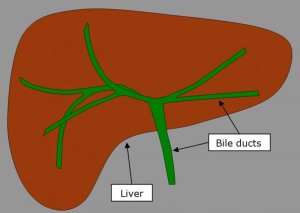

MedFriendly®


Bilifaction, Biligenesis, Biliferous
Bilifaction is a rarely used term for the formation of bile.
Bile is a bitter, yellow-green substance released from
the liver that carries away waste products. The liver is
the largest organ in the body and is responsible for
filtering (removing) harmful chemical substances,
producing important chemicals for the body, and other
important functions. Bile is produced by liver cells
known as hepatocytes. From there, the bile drains into
a duct known as the hepatic duct (hepatic refers to
liver).
FEATURED BOOK: The Liver Healing Diet
A duct is a tube that allows fluids and/or substances to pass through it. The liver makes
about 600 milliliters to 1 liter (1000 milliliters) of bile a day. Bile helps with fat digestion
and absorption in the gut. It also is a way for the body to excrete waste products from the
blood.
Bilifaction is also known as bilification and biliferous. Biliferous is also a rarely used term
to describe something that contains or carries bile. Bilifaction comes from the Latin word
"bilis" meaning "bile," and the Latin word "facto" meaning "to make." Put the words
together and you have "to make bile." Biligenesis is the process by which bile is
produced. Biligenic means bile producing. Biligenesis comes from the Latin word "bilis"
meaning "bile," and the Greek word "genesis" meaning "production." Put the words
together and you have "bile production."
"Where Medical Information is Easy to Understand"™















